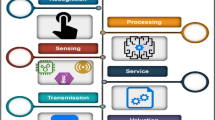Abstract
This paper aims to present an evaluation of targeted attack sequences based on a new set of power traffic centrality measures according to the vulnerability prediction measure (VPM) approach. A framework for evaluation of attack proposed in previous work is applied using three fault strategies: remove most central element first (RMCEF), iterated most central element first, and iterated electrical most damaging element first (IMDEF). For attacks on nodes, the reliability of the IMDEF strategy is confirmed, as it was the most predictive in terms of the VPM. Nevertheless, in attacks performed on links, the IMDEF does not always represents the most harmful attack. Regarding the new centralities, the Katz centrality consistently presented high values of VPM for attacks on nodes and links, with results that are comparable to degree and eigenvector centralities. In terms of execution times, the percolation centrality is not recommended, as it presented the highest execution times. The RMCEF strategy with degree, eigenvector and Katz centralities is a good estimation of the most harmful attack sequences on nodes and links with a shorter execution time than the IMDEF.








Similar content being viewed by others
References
Gunduz MZ, Das R (2020) Cyber-security on smart grid: threats and potential solutions. Comput Netw 169: 107094. https://doi.org/10.1016/j.comnet.2019.107094
Cardenas DJS, Hahn A (2019) IoT threats to the smart grid: a framework for analyzing emerging risks. In: ACM international conference proceeding series, 2019
Verma T, Ellens W, Kooij RE (2013) Context-independent centrality measures underestimate the vulnerability of power grids. Int J Crit Infrastruct 11:1–21. arXiv:1304.5402
Nasiruzzaman ABM, Pota HR, Anwar A, Islam FR (2012) Modified centrality measure based on bidirectional power flow for smart and bulk power transmission grid. In: IEEE international power engineering and optimization conference, no. June. Melaka, Malaysia. IEEE 2012, pp 159–164
Gutierrez F, Barocio E, Uribe F, Zuniga P (2013) Vulnerability analysis of power grids using modified centrality measures. In: Discrete dynamics in nature and society 2013
Bompard, E., Luo, L. and Pons, E. (2015) A perspective overview of topological approaches for vulnerability analysis of power transmission grids. International Journal of Critical Infrastructures 7, 11(1), pp.15-26.
Liu, B., Li, Z., Chen, X., Huang, Y. and Liu, X. (2017) Recognition and vulnerability analysis of key nodes in power grid based on complex network centrality. IEEE Transactions on Circuits and Systems II: Express Briefs, 65(3), pp.346-350.
Sun, Y., Yang, D., Meng, L., Gao, X. and Hu, B. (2018) Universal framework for vulnerability assessment of power grid based on complex networks. In 2018 Chinese Control And Decision Conference (CCDC) (pp. 136-141). IEEE.
Jiang, H., Wang, Z. and He, H. (2019) An evolutionary computation approach for smart grid cascading failure vulnerability analysis. In 2019 IEEE Symposium Series on Computational Intelligence (SSCI) (pp. 332-338).
Shan, X.G. and Zhuang, J. (2020) A game-theoretic approach to modeling attacks and defenses of smart grids at three levels. Reliability Engineering & System Safety, 195, p.106683.
MathWorks, MATLAB Release 2019b products with licenserelated changes, Natick, Massachusetts, 2019.
Katz L (1953) A new status index derived from sociometric analysis. Psychometrika 18(1):39–43
Everett MG, Borgatti SP (1998) Analyzing clique overlap. Connections 21(1):49–61
Piraveenan M, Prokopenko M, Hossain L (2013) Percolation centrality: quantifying graph-theoretic impact of nodes during percolation in networks. PLoS ONE 8(1):14. https://doi.org/10.1371/journal.pone.0053095
Author information
Authors and Affiliations
Corresponding author
Additional information
Publisher's Note
Springer Nature remains neutral with regard to jurisdictional claims in published maps and institutional affiliations.
Rights and permissions
About this article
Cite this article
Albarakati, A. Evaluation of the Most Harmful Malicious Attacks in Power Systems Based on a New Set of Centralities. J. Electr. Eng. Technol. 16, 1929–1939 (2021). https://doi.org/10.1007/s42835-021-00743-3
Received:
Revised:
Accepted:
Published:
Issue Date:
DOI: https://doi.org/10.1007/s42835-021-00743-3




